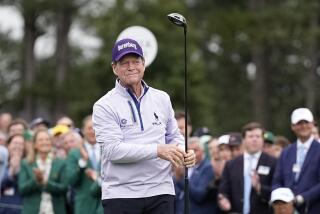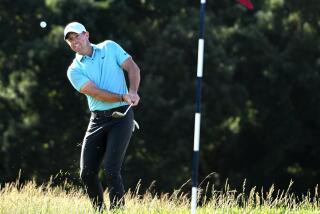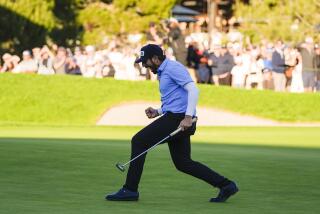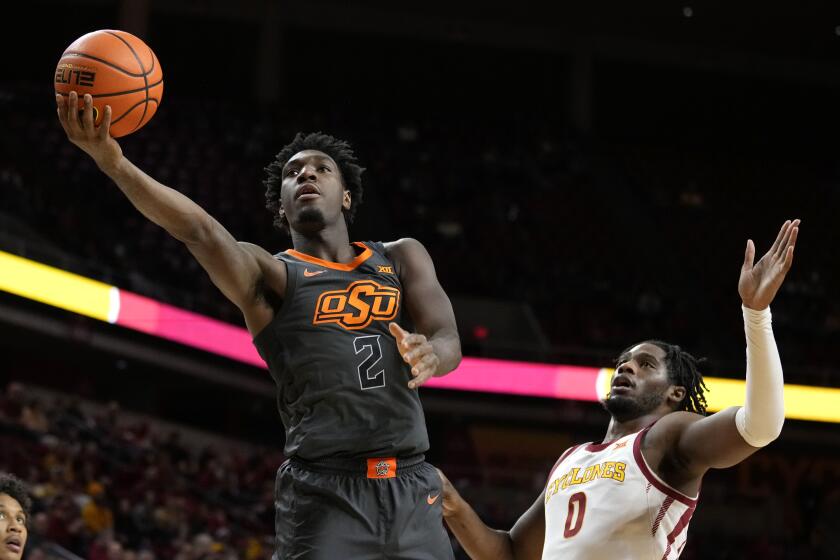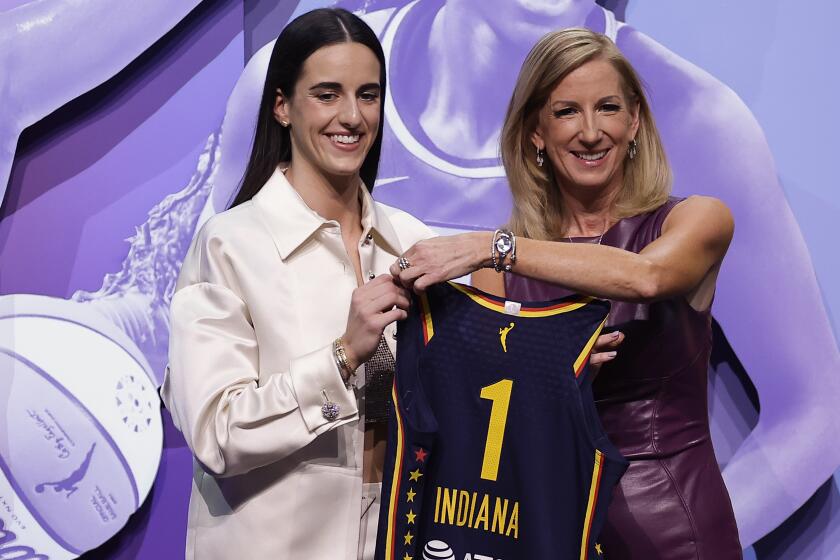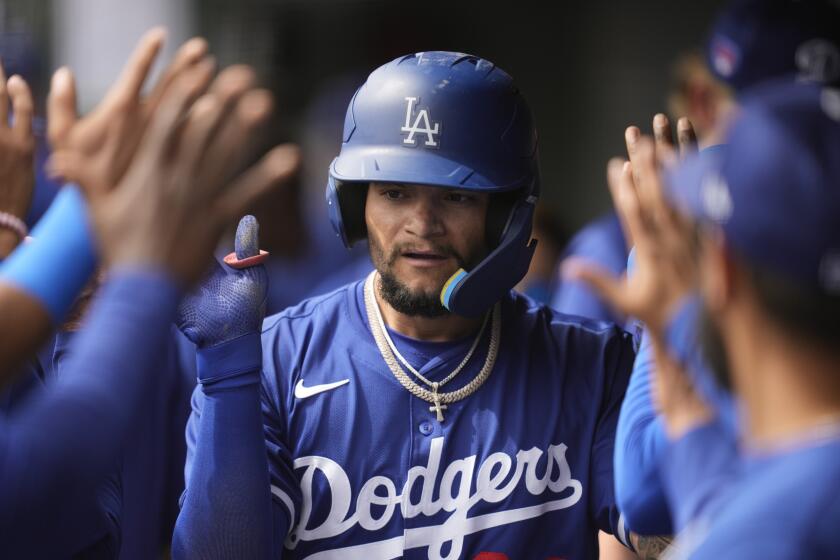Phil Mickelson always keeps an Open mind
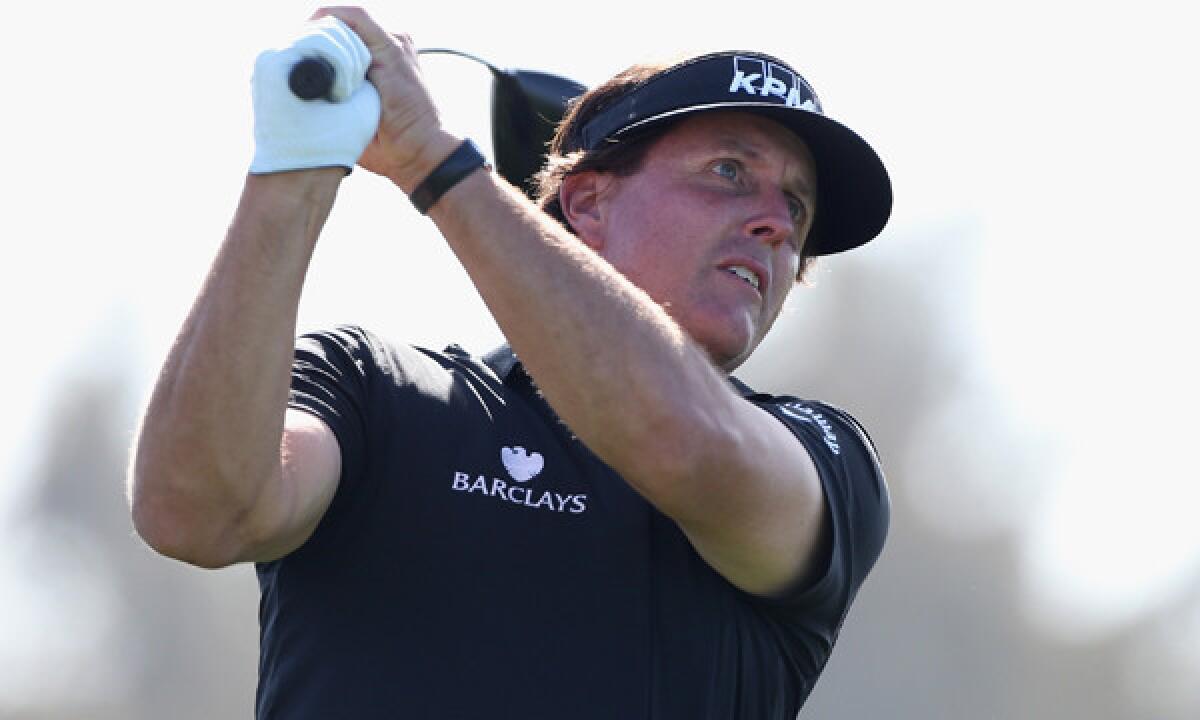
LA JOLLA — Time passes, Phil Mickelson heals and we forget.
Mickelson wins a British Open and we have him again in our mind’s eye as a 35-year-old, healthy and hearty, with lots of gas left in his golf tank.
Actually, he will be 44 in June, which puts him six years from the Champions Tour.
Still, we stand a few feet behind him on the practice range Wednesday and the Champions Tour seems much more than six years distant. His swing is like a computerized arc. It goes back the same way, comes down and through the same way. He is golf’s version of a metronome.
The ball doesn’t just fly at the target, it soars with nary a waver. Your eyes need to be young and sharp to follow his shot to its landing, and he is hitting a hybrid, not a driver.
The row of players on the same range, the jewels of the PGA Tour, are making golf balls do much the same thing. But with Mickelson, there always seems to be that extra pinch of natural magic.
He is just back from Abu Dhabi, where he would have won the HSBC tournament had he not committed a “Phil.” Leading on Sunday, he drove the ball under a bush on No. 13, tried to slash it out and double-hit it, ending up taking a triple bogey. He then did another “Phil,” making birdies on three of the last five holes.
“I was happy because I got better every day,” he said Wednesday.
He said he has to work out more now, keep the muscles stronger and more flexible, but added quickly, “I haven’t had anything holding me back from working on my game.”
Many of the questions Wednesday were about this year’s U.S. Open, to be played at Pinehurst, where Mickelson finished second to Payne Stewart in 1999, marking the first of his six runner-up finishes in the one major tournament he needs to win to complete a career Grand Slam.
He didn’t duck the issue of his U.S. Open failings, as some on the tour might for fear of jinxing themselves.
“I love the fact that I have one tournament to go, one to get that career Grand Slam,” he said. “I’m not going to hide from it.”
He even said he’d like to “win a couple.”
So we know about the six runner-up spots. What we know less about is another close call in a U.S. Open, and all the quiet drama that went on behind the scenes.
It was 2010, the U.S. Open was at Pebble Beach, and Pebble Beach was, and is, one of Mickelson’s favorite courses. He was headed for a big year. He had already won the Masters.
A week before Pebble, he awoke in the middle of the night with so much pain in his ankle he said it felt like it was on fire. He called a friend and said he must have fallen on it and didn’t remember.
He got to Pebble Beach hurting and confused. He made it to the news conferences and the driving range, and unless you were a keen observer, he seemed fine.
But every time they loaded him into a courtesy car and cranked up the air conditioning, he’d be nearly frozen stiff and barely able to get out.
“He’d walk like a tin soldier,” said the friend.
He tiptoed his way through the entire event like that, loosening up on the range, getting to the first tee and staying loose enough to look normal and swing normal during the round. The toughest part was sitting down in the scorer’s tent afterward, stiffening up and then having to hobble secretly off to a courtesy car, where they’d crank up the air conditioning again.
He played the entire tournament unable to bend his left pinkie finger. He just put it straight down the club handle, like many players do when they putt, and played that way. Nobody noticed, and he still averaged around 300 yards on his drives.
Incredibly, in a tournament that became Graeme McDowell’s coming-out party, Mickelson finished fourth, shooting a 66 in the second round, and won $303,119.
Quietly, he went back home, still confused and deeply worried. Years later, he told Steve DiMeglio of USA Today that he had to move to the couch to sleep because, every time his wife Amy moved, it hurt.
He didn’t play again until the British Open, a month later. It was at St. Andrews and you get off a deathbed to play there. He struggled and tied for 48th.
By then, he had a diagnosis. He was suffering from psoriatic arthritis, something that hits from out of nowhere, can cause all sorts of strange problems and affects an estimated 25 million people.
On Aug. 10, just five days before the start of the PGA — only the third tournament he would play since Pebble Beach —- he announced his diagnosis, said he was taking a drug called Enbrel that was very effective and started doing commercials for it.
Wednesday, the talk was about new technology that has provided him with higher lofts and smaller clubheads. He appears to be as eager and motivated as that 35-year-old in our mind’s eye.
But how different things might have been with a faulty diagnosis or a lack of response to medicine.
For a golfer who, four years ago, couldn’t bend his left pinkie finger for six months, the future is incredible healthy.
bill.dwyre@latimes.com
More to Read
Get our high school sports newsletter
Prep Rally is devoted to the SoCal high school sports experience, bringing you scores, stories and a behind-the-scenes look at what makes prep sports so popular.
You may occasionally receive promotional content from the Los Angeles Times.
